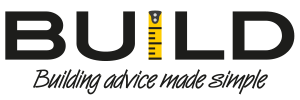
When we think of summer, we think of comfortable warm temperatures and blissful time spent outdoors with friends and family surrounded by stunning greenery. But the reality is that temperatures can quickly skyrocket to extreme levels, not only making us want to avoid the sun but turning our homes into uncomfortable and potentially dangerous environments.
Here, you will learn everything from ventilation and indoor cooling tricks to taking care of your body and even preparing for power cuts!
Maintain a cool indoor environment
The first line of defence when it comes to protecting your home from the heat is keeping it out before it has a chance to enter. Start by blocking the direct sunlight, which will quickly warm your home by closing blinds and curtains on windows facing the sun during the hottest part of the day. This simple step will stop a lot of heat from entering your living space.
Fans are also fantastic for moving air around, helping you to feel cooler. Ceiling fans are great for circulating air in a room, creating a gentle breeze and placing box fans in windows during cooler nights will draw in the fresh air. For a quick cool down, hang damp sheets in front of an open window to let the air cool as it passes through.
Make use of natural ventilation
Taking advantage of natural airflow can greatly improve your indoor comfort, especially when the outdoor temperatures drop. Open windows and doors overnight or in the early morning to let cooler air replace the hot air that has built up during the day. As soon as the sun rises and temperatures begin to soar, close everything up again.
A great hack is to create cross-ventilation by opening windows on opposite sides of your home. This method will help to draw a strong current of air that helps to remove stale, hot air and bring in a fresh breeze. Closing windows once outdoor temperatures rise above what it is indoors will trap the cooler air inside.
Prevent overheating of electronics and appliances
Extreme heat can be incredibly harmful to your electronics and appliances, such as computers, TVs and gaming consoles, that require good airflow to stay cool. Ensure that you do not block their vents, allowing air to move freely, and unplug devices that you aren’t using to reduce heat buildup. Even in standby mode, electronics can generate heat.
If possible, move any equipment that is heat-sensitive to a cooler part of your home. For example, a laptop that is sitting on a bed in direct sunlight might overheat faster than one on a desk in a shaded corner. Overheating can cause electronics to slow down, crash, or even break completely, so protecting them will help them last longer and function more efficiently.
Keep food and perishables safe
Your fridge and freezer must work extra hard during a heatwave, but there are steps you can take to help them out. Check their door seals often to make sure that no cold air is escaping, and avoid overfilling as this will block proper air circulation and make the appliances less efficient.
Consistently monitor the temperature of your fridge and freezer to make sure they are adequately cooling your food and perishables. If a power cut strikes, keep their doors closed as an unopened fridge can keep food cold for around four hours, and a full freezer may hold its temperature for up to 48 hours.
Reduce fire risks
Heatwaves can significantly increase fire risks, especially from faulty wiring or overloaded circuits. Avoid plugging too many devices into one outlet, as overloaded outlets can get hot and cause fires. Always check power cables and extension leads for frayed wires or damage, and replace any that look worn out.
Prepare for emergencies
The strain on power grids can rise rapidly during a heatwave, leading to unexpected outages and having an emergency kit ready will help you to cope if the power goes out. Ensure that you have plenty of water for several days and non-perishable foods that don’t require cooking.
Your kit should also contain a torch or other battery-powered sources of light, and it is important to conserve the battery of devices such as your mobile phone for as long as possible. Power cuts are unpredictable in terms of how long they will last.
Keep cool without electricity
If the power does go out, staying cool can become a lot more challenging. Use battery-powered fans to create some airflow and close your blinds and curtains immediately to block out any remaining sunlight. Try to remain in the coolest parts of your home, such as downstairs, where temperatures tend to be lower.
Take care of yourself
Of course, the most important thing in your home is yourself and your family, so it is important to take the necessary steps to lower your body temperature and remain comfortable. Take frequent cool showers or baths to quickly refresh yourself, and fill a spray bottle with cold water to mist yourself with for instant relief. Applying cool, wet cloths to your pulse points will help to cool your blood as it circulates through your body.
Wear light-coloured, loose-fitting clothing made from breathable fabrics. Dark colours absorb heat, and tighter clothing will trap it against your skin. Dressing appropriately for the heat will help to keep air flowing around your body and allow sweat to evaporate and cool you down.
Final thoughts
Keeping your home and family safe during a heatwave will take some advanced preparation and careful choices. The key is to focus on blocking heat from entering your home, optimising any cooling systems you have, and staying hydrated.
Protect your electronics and food, be mindful of fire risks, and have an emergency kit ready in case of any unexpected power cuts. By putting these simple measures in place, you can protect yourself and your home from any incoming heat waves!
Natalie Mitchell has worked as a property and construction expert for HomeHow for five years and has worked in the construction industry for over twenty years. Natalie continues to work on building projects while also providing expert construction and property advice to industry professionals and DIY enthusiasts.





